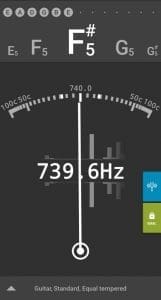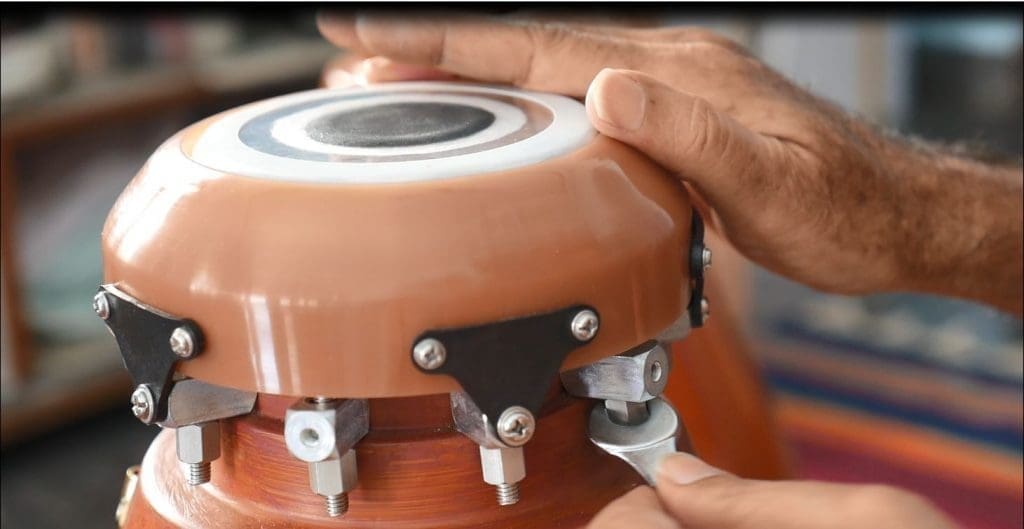Madhura Mridanga - A Tuning Guide
Madhura Mridanga is a tunable khol. You can easily tune it to various tones & semitones in a matter of minutes.
Use the spanner 10mm side of the “10-11mm” sized wrench provided along with Madhura Mridanga for tuning. Kindly note that on the small head, the number of nuts are 10. On the large head, the number of nuts are 12 in number.

10″-11″ sized Spanner

Step 1: Open the “Gstrings” App (Kindly download it from Google Play store – https://play.google.com/store/apps/details?id=org.cohortor.gstrings&hl=en_IN). You can also use any other app which you may find easy to use and accurate.
Gstrings is not available for iPhone but there are some alternatives with similar functionality. The best iPhone alternative is “AP Tuner”, which is free. If that doesn’t suit you, our users have ranked more than 10 alternatives to gStrings and eight of them are available for iPhone so hopefully you can find a suitable replacement. Other interesting iPhone alternatives to gStrings are Tunable, PitchLab Guitar Tuner, PitchPerfect and Tuner T1.
Tuning the SMALL HEAD:
Step 2: When the tip of the heads are mildly tapped or even when an “open sound” – “re” is made at any given point corresponding to the nuts on the small head of the mridanga, the pointer in the Gstrings app should point to F5# shruti which is 740Hz. Anywhere between 740Hz – 745Hz should be okay.
Hold the 10mm side of the wrench or spanner in your left hand. Wherever you feel the shruti is less or more, accordingly tighen by tunring clockwise of loosen by turning anticlockwise. Go on tapping the tips corresponding to each nut and ensure you achieve equal shruti as far as possible. Once you complete tuning the 10 nuts, now mildly hit the head with your palm. This will settle the stretched head and usually reduce the frequency. So once again go nut by nut tuning and check. Repeat until you have a stabilised F5# tone on the small head.
Within few minutes, tuning the small head can be achieved.



Tuning the LARGE HEAD:
Step 3: When the “open sound” – “da” is made repeatedly on the large head of the mridanga, then the pointer should point to A2# shruti which corresponds to 116.5Hz. 116.5Hz – 117Hz should be okay. This corresponds to “Gandhara” to F# shruti chosen for the small side head which is “Sadja” or the beginning note.
In case it is less than 116.5Hz, kindly tighten two nuts by turning clockwise. Continue to check at different points. If in case it is higher than 116.5Hz, slightly turn the nuts anticlockwise to reduce the tone. Ensure at different points, the tone is around 116.5Hz.

Once tuned this way, press or beat the centre of the head with the palm tip. This settles the stretched head. Check the tone again. If reduced, tune it and repeat the process. Within few minutes, this tuning of the small head can be achieved.
Kindly write to us or contact us for any queries regarding tuning.

